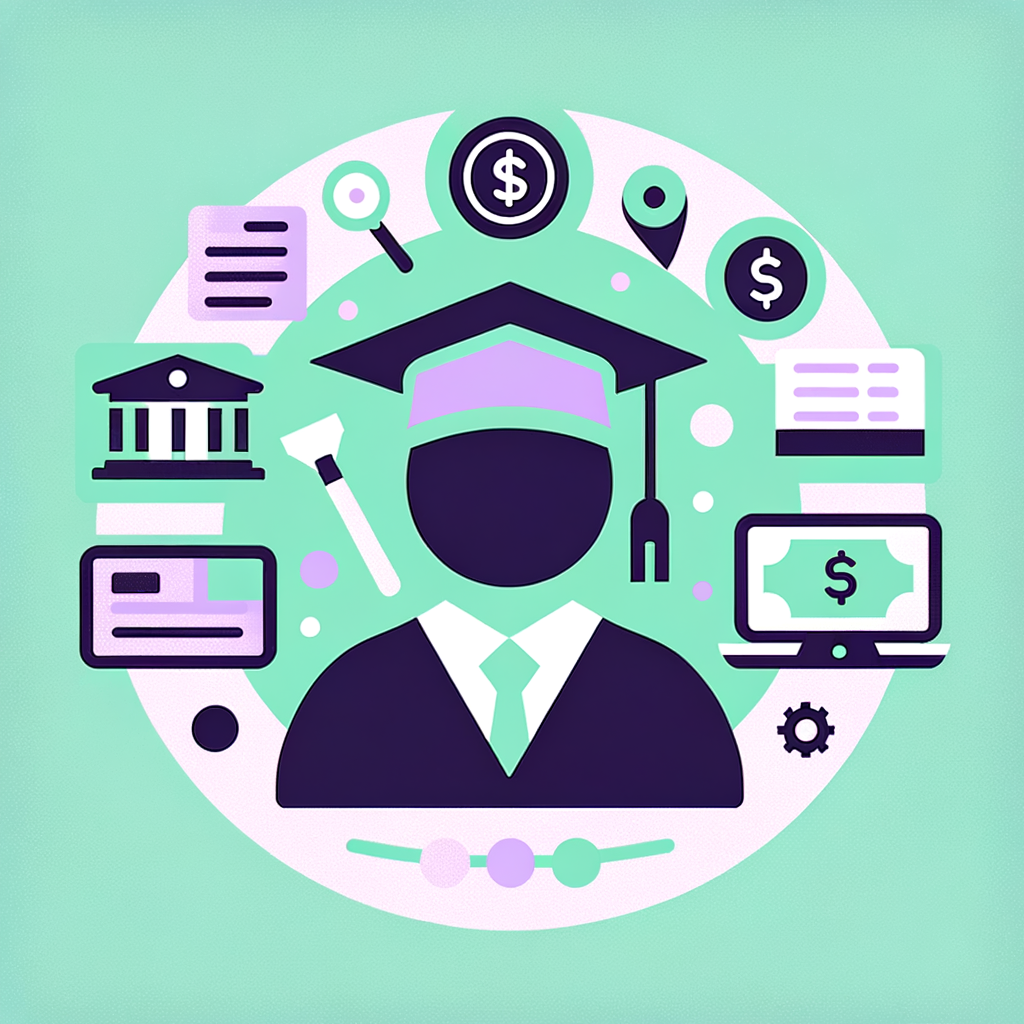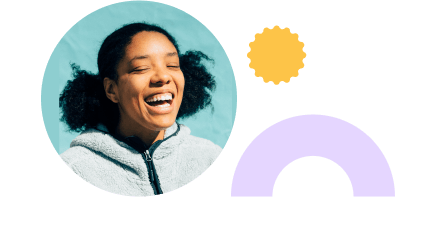Advertiser Disclosure
Last update: November 17, 2024
8 minutes read
Student Loan Forgiveness Programs
Wondering if you're eligible for student loan forgiveness? Learn the key criteria and start your journey to debt relief today.

By Brian Flaherty, B.A. Economics
Edited by Rachel Lauren, B.A. in Business and Political Economy
Learn more about our editorial standards



By Brian Flaherty, B.A. Economics
Edited by Rachel Lauren, B.A. in Business and Political Economy
Learn more about our editorial standards
Navigating student loan forgiveness programs can be a tall order, inviting lots of questions about eligibility, benefits, and changing regulations. With the Supreme Court's recent decision around forgiveness affecting many, understanding your options has never been more critical. In this post, you'll dive into the nuances of student loan forgiveness and uncover the answers to pressing questions about eligibility and benefits. For people considering a broader range of options, exploring how student loan refinancing could benefit you might provide an alternative path to financial relief.

Key takeaways
- Eligibility criteria is key in identifying if you qualify for student loan forgiveness
- Types of employment and repayment plans greatly influence forgiveness eligibility
- Research and record-keeping are essential steps in successfully navigating forgiveness
Student loan forgiveness programs - do you qualify?
Understanding if you qualify for student loan forgiveness programs requires a deep dive into the specifics of each program, as well as individual circumstances like employment and the type of loans you have. Recent updates from the government have expanded forgiveness under programs like Public Service Loan Forgiveness (PSLF) and Income-Driven Repayment (IDR), unlocking new opportunities for borrowers.
Employment plays a crucial role in determining eligibility. For instance, teachers, government employees, and certain nonprofit workers could see big portions of their loans forgiven under the PSLF program.
Similarly, people employed in specific public services may find relief in Perkins Loan Forgiveness. First responders, teachers, and healthcare workers usually qualify for forgiveness, reflecting the crucial roles they play in society.
When assessing eligibility, consider these key factors:
- Type of Loan: Only federal student loans are eligible for most forgiveness programs; private loans don't qualify.
- Employment Status: Your job may open the door to forgiveness, especially if you work in public service or for a nonprofit organization.
- Repayment Plan: Enrollment in an Income-Driven Repayment plan is a prerequisite for non-PSLF or public service relief forgiveness options.
Many programs come with their unique set of requirements, but with the right information, navigating these matters becomes less challenging. Whether you're a recent graduate or long into your loan repayment journey, understanding these programs could lead to big financial relief.
For detailed insights into managing your student loans more effectively, consider exploring federal student loan options and how they might align with your personal financial strategy.
Remember, forgiveness programs aren’t always the best way to clear your student debt quickly. While these programs can help reduce your total amount owed, they typically only kick in after 10 or 20 years of qualifying payments.

TuitionHero Tip
If you want to clear your debt fast, making extra payments directed toward your principal balance can sometimes be a better strategy than pursuing loan forgiveness.
What are the specific requirements for the PSLF program?
Eligibility for the Public Service Loan Forgiveness (PSLF) program depends on multiple specific criteria, each designed to ensure that those in public service roles can see a path to loan forgiveness after a dedicated period of service.
Employers and employment status matter. You need to work full-time for a government agency or a not-for-profit organization recognized under section 501(c)(3) of the Internal Revenue Code.
Part-time workers can also qualify, provided they meet the aggregate of 30 hours per week across multiple qualifying jobs. Plus, you will need to make 120 qualifying monthly payments while working for an eligible employer. It’s a marathon, not a sprint, aligning debt relief with long-term service commitment.
While access to PSLF is an attractive benefit to certain types of work, remember that it might not be worth it if the salary difference is great enough. A relatively higher-paying job in the private sector might allow you to pay off debt quicker despite these payments not qualifying for PSLF.
If you go to the private sector any time within those 10 years, the clock pauses but doesn't reset. Simply put, the payments under PSLF forgiveness do not need to be consecutive - as long as you go back into a job that qualifies, your payment count will resume toward the 120.
People navigating PSLF must stay up-to-date with the latest guidelines and ensure their employment and loan payments continue to align with program requirements. For people wondering how these qualifications reflect their circumstances, TuitionHero offers insights into navigating student debt alongside other financial goals.
How do income-driven repayment plans work?
Income-driven repayment (IDR) plans are tailored to align your student loan payments with your income, making your financial obligations more manageable based on your earning capacity. IDR plans calculate monthly payments as a percentage of your discretionary income, meaning as your income fluctuates, so do your payments. They could even potentially go to $0/mo if your income is low enough.
This flexibility is crucial for people in industries with variable earnings or for people in the early stages of their careers. After 20 or 25 years of qualifying payments, depending on your specific IDR plan, any remaining loan balance is forgiven.
The SAVE plan, a subset of IDR, offers a compelling option, lowering the percentage of income owed monthly, as well as promising potential forgiveness in as few as 10 years for initial balances under $12,000. For comprehensive insights on aligning your repayment strategy with your financial landscape, exploring IDR options can offer a roadmap.
Compare private student loans now
TuitionHero simplifies your student loan decision, with multiple top loans side-by-side.
Compare Rates
Loan forgiveness for teachers
Teachers have a big influence on our future, and loan forgiveness programs acknowledge this by offering significant financial relief to people who commit to working in low-income schools. Under the Teacher Loan Forgiveness program, educators might see up to $17,500 of their loans forgiven after five years of dedicated teaching.
This forgiveness not only lightens the financial burden but serves as an incentive for talented educators to serve where they're needed most. Perkins Loan Forgiveness extends similar benefits, erasing a teacher’s loan debt progressively over five years. Whether you’re a seasoned educator or considering a career in teaching, understanding the financial mechanics of student loans could dramatically affect your approach to both your profession and personal finance.
Dos and don'ts of navigating student loan forgiveness
When it comes to navigating student loan forgiveness, understanding the right steps to take—and the pitfalls to avoid—can affect your success. This guidance is especially relevant for borrowers looking to leverage forgiveness programs to manage or eliminate their student loan debt.
Do
Do research all available forgiveness programs.
Do ensure your employment qualifies if necessary.
Do consider consolidating loans if it makes you eligible.
Do keep detailed records of your payments.
Do explore how student loans affect credit scores to maintain financial health.
Don't
Don't assume all loans qualify for forgiveness.
Don't miss payments; late payments can disqualify you.
Don't forget to recertify your income annually for IDR plans.
Don't ignore communication from your loan servicer.
Don't hesitate to get advice from financial experts or counselors.

Advantages and disadvantages of student loan forgiveness programs
Engaging with student loan forgiveness programs can offer a lifeline for borrowers overwhelmed by their educational debt. These programs, designed to ease the financial strains of loans, come with their unique sets of benefits and downsides.
- Greatly reduced overall debt burden
- Possible improvement in borrowers' creditworthiness over time
- Encouragement to work in public service or underserved areas
- Income-driven repayment plans can adjust payments based on income, making monthly expenses more manageable
- Long qualification periods can delay debt freedom, stretching up to 20 or 25 years for some IDR plans
- Requires strict commitment to payment schedules and employment criteria
- Some forgiveness programs are taxable, potentially leading to a big tax liability
- Limited eligibility criteria may exclude many borrowers
- Risk of program changes or discontinuation based on political shifts

Why trust TuitionHero
At TuitionHero, we help students and parents deal with the burden of student loans. We offer resources like loan forgiveness advice, refinancing options, and scholarship opportunities. Our goal is to provide the tools and guidance needed to make informed financial decisions. We work with reputable lenders to tailor solutions to fit your needs. Let us help lighten your financial load.
Frequently asked questions (FAQ)
Even if your current role doesn’t directly qualify for the Public Service Loan Forgiveness (PSLF) program, you might still have options through other loan forgiveness or repayment plans. Income-driven repayment plans, for example, offer forgiveness after 20 to 25 years of qualifying payments and are available to a wider range of employment types, not just those typically eligible for PSLF.
Once federal student loans are refinanced through a private lender, they’re not eligible for federal forgiveness programs, including PSLF or IDR plans. This is a crucial consideration for anyone thinking about refinancing for lower interest rates or better terms, as it could affect long-term forgiveness eligibility.
To stay on track with the Public Service Loan Forgiveness (PSLF) program, it's recommended that you submit the Employment Certification Form annually or whenever you change employers. This ensures that all qualifying payments are accurately tracked toward your forgiveness eligibility, keeping you informed of your progress.
Final thoughts
Navigating the world of student loan forgiveness presents a complex but navigable path toward financial relief for many borrowers. Understanding the complexities of each program's eligibility requirements, benefits, and potential drawbacks is crucial.
At TuitionHero, we're committed to guiding students and parents through college finance, offering resources that simplify loan forgiveness and broader financial health. Whether you're just starting your exploration or looking to make a strategic move, our tools and advice are designed to empower your decisions every step of the way. Please take a moment to explore our guidance on how student loans affect credit scores to further support your journey to financial freedom.
Source
Author

Brian Flaherty
Brian is a graduate of the University of Virginia where he earned a B.A. in Economics. After graduation, Brian spent four years working at a wealth management firm advising high-net-worth investors and institutions. During his time there, he passed the rigorous Series 65 exam and rose to a high-level strategy position.
Editor

Rachel Lauren
Rachel Lauren is the co-founder and COO of Debbie, a tech startup that offers an app to help people pay off their credit card debt for good through rewards and behavioral psychology. She was previously a venture capital investor at BDMI, as well as an equity research analyst at Credit Suisse.
At TuitionHero, we're not just passionate about our work - we take immense pride in it. Our dedicated team of writers diligently follows strict editorial standards, ensuring that every piece of content we publish is accurate, current, and highly valuable. We don't just strive for quality; we aim for excellence.
Related posts
While you're at it, here are some other college finance-related blog posts you might be interested in.
Shop and compare student financing options - 100% free!

Always free, always fast
TuitionHero is 100% free to use. Here, you can instantly view and compare multiple top lenders side-by-side.

Won’t affect credit score
Don’t worry – checking your rates with TuitionHero never impacts your credit score!

Safe and secure
We take your information's security seriously. We apply industry best practices to ensure your data is safe.
Finished scrolling? Start saving & find your private student loan rate today





